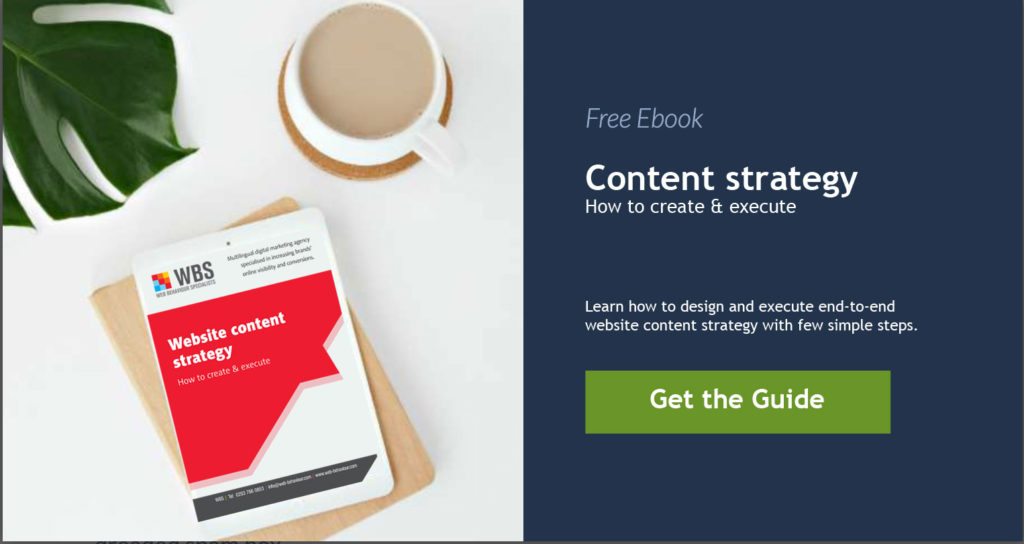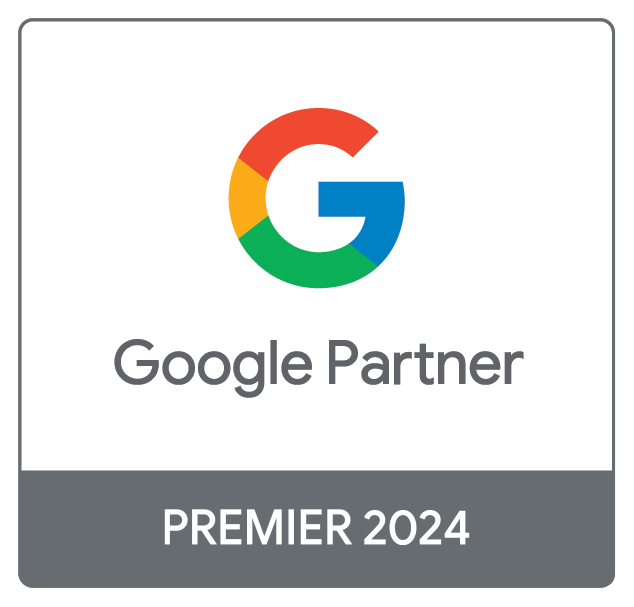B2B marketing has changed dramatically over the last few years and it’s now less clearly defined who a B2B buyer actually is – the B2B marketing funnel has gotten longer and there are usually more people involved in the decision-making process. The modern B2B buyer does their own research, mainly online, and they make 8 to 12 online searches before they even contact the brand. And while managers and directors still have the final say and sign-off decision, there are many other parties involved in the decision-making process who may well have different needs that need to be considered. This means that you need to create a journey-based digital experience that guides your target audience through the stages of the buyer’s journey, providing the right information to the right person at the rights time, turning them into raving fans and lifelong customers.
Why content is so important for B2B brands?
75% of B2B buyers say that content significantly impacts their buying decision and 62% say they can make a purchase selection based solely on digital content. Over 80% of B2B buyers view at least 5 pieces of content during the purchase process, and half of them view more than 8 pieces.
Content moves your prospects through the buyer’s journey, reinforcing relationships at every stage of the sales funnel. Content marketing might include blogs, social media videos, press releases, news articles, FAQs, email newsletters, e-books, whitepapers, case studies, infographics, etc. But content marketing requires methodical planning and a clearly defined strategy to be successful and grow the business.
Check out Top 7 Digital Marketing strategies for B2B Brands
Your overall content strategy should take into account elements like: setting up goals for your content marketing efforts, who your audience is, what kind of content to create, where to post content and how often, how to repurpose and promote this content, who is responsible for content creation and promotion, how are you going to measure the performance of your content marketing efforts, etc.
It’s also important to remember these important characteristics of B2B content marketing:
- B2B represents a small focused market
- It has a long buying cycle
- It’s based on relationships with business buyers
- B2B audiences are seeking expertise so content has to be useful and provide value
- It has to focus on lead generation
Your content marketing efforts should reflect all of the above. Here are some strategies that can be used to make it more effective.
Identify your target audience
You need to realise and understand the content needs and the expectations of your target audience in order to design an effective strategy. Don’t just target CEO’s, etc. but all people involved in making purchasing decisions. Remembering that different people/job functions will require and be searching for different types of information i.e. a CTO may want to read about the more technical & functional aspects of your offering, whereas the CEO may want ‘bigger picture’ content focusing on outcomes, etc.
Set clear goals
Like all forms of marketing activity, you need to set precise and clear goals for your content marketing efforts as well as individual content pieces.
Research content ideas
With a specific audience and goals in mind, you can focus on finding content ideas for your B2B content marketing campaigns. You need to remember that different types of content work differently at each stage of the customer journey, e.g. blogs work great during the initial research phase whereas case studies and testimonials work better during the consideration phase. When creating content, always aim to attract the right prospects at the right stage of their customer journey. Building a knowledge resource through blogs, staying connected through email marketing and publishing informative content in the form of videos or e-books are some of the tried-and-tested content marketing strategies for B2B.
One note about blogs – Blogs in the research phase of the customer journey should make buyers aware of and interested in your product. You should identify the problems your products/services solve and incorporate them into engaging blog posts. The idea here is to move away from producing content that focuses on what you do, towards creating more content that shows customers that you understand their pain points and are capable of eliminating them.
Create content that converts
85% of B2B marketers say lead generation is the most important content marketing goal. If done right, content marketing can be a great source of B2B leads.
Lead magnets are one of the greatest ways to generate B2B leads. A lead magnet is a piece of valuable content (a PDF or maybe a recorded webinar) that can be viewed, gated or downloaded in exchange for an email address or other contact info.
Lead magnets come in different formats but they all must provide value above what’s available for anyone who visits your website. The more valuable information a lead magnet contains, the more leads it’ll generate.
Some of the most effective lead magnets include e-books, webinars, podcasts, whitepapers, reports, free trials, demos, free tools, calculators, in-depth case studies, etc.
Create content for the different stages of the customer journey
Create content that offers relevant solutions and is helpful for your users in each stage of the customer journey. If you want a customer to convert, make sure that your landing pages and content offer more value, actionable advice or offers to encourage them to e.g. fill the form with their contact details.
Content distribution plan
It’s not enough to just create content on a regular basis, you also need a content distribution plan. To prepare a plan you need to pick the audience your content is targeting, pick a stage in the customer journey your content targets (awareness, consideration, purchase, etc.) and pick channels that resonate with that audience at that stage in the cycle. For example, blogs and infographics work well for social media, while special offers work well with email marketing or PPC ads.
Competitor research
As you and your competitors are serving the same market, you are aiming to reach the same audience. This means that your competitors are a great source of information for topics, approaches and strategies to use (or avoid) in your content marketing strategies.
For example, you can do some competitor analysis to see what type of content they are creating, and you can build similar topic clusters or find content gaps to use as an opportunity to write new content.
User generated content
B2B buyers want to know how others have used your product or service and if they recommend it. Research what your audience is already saying about your product and see how you can incorporate it (with their permission) into your content marketing strategy. Collect reviews and recommendations from your audience as content generated by users is heavily relied upon by other consumers.
SEO
When working on a content strategy for your B2B brand, you mustn’t forget about SEO and your website rankings. As the modern B2B buyer does their own research, mainly online, and make 8 to 12 online searches before they even contact the brand, reaching your audience on search engines is vital to any B2B brand.
To rank well organically in the search results, you must establish and promote yourself as the authority in your market as well as produce highly relevant, optimised content. In order to get your B2B company to the top of search results, your website needs to be optimised for SEO. You need content driven by what your audience wants and needs, you need to target the right industry keywords, you need to get other authoritative and relevant websites to link to, etc.
Don’t forget about paid ads
As the top of the search results page is dominated by paid ads, especially on mobile, they could and should be an integral part of your marketing strategy. Read how SEO and PPC work well together.
Leverage social media
B2B companies have realised the power and the potential of social platforms. When done correctly, B2B social networking platforms can boost your business by increasing your brand’s visibility. There is no better way of gaining customers’ trust and building relationships than using social platforms.
Most B2B marketers use social media platforms to distribute, promote and repurpose existing content. Good use of social media can include engaging visuals and giving helpful info such as: industry and business tips, industry news, statistics and ‘did you know’ style info, pain points and solutions, cool features, updates to your B2B products/services, success stories, case studies, testimonials, FAQs, etc.
Read our LinkedIn case study!
Get personal
Even though we are trying to reach business buyers, it doesn’t mean we can’t be personal with our content marketing efforts. Social media is an excellent platform for getting more personal for B2B buyers, e.g. by sharing photos, online reviews or testimonials.
Tracking and measurement
Make sure that every piece of content you create is benchmarked against a single goal, e.g. promoting a new solution or driving sign-ups for a webinar. Without setting up goals and measurements, you won’t be able to prove the value of your content marketing efforts or calculate the ROI. Collecting data about your content will help you see the topics your audience is most interested in, the most effective forms of content (e.g. blog posts, infographics, webinars, etc.) and identify gaps in your content strategy.
B2B content marketing presents all sorts of unique challenges when it comes to both creation and promotion. But if you follow the above strategies to develop your own content marketing strategy, you can make it work really successfully for your B2B brand. Don’t forget that as with any other digital marketing activity, the content strategy should evolve – learn from all activities and improve.









